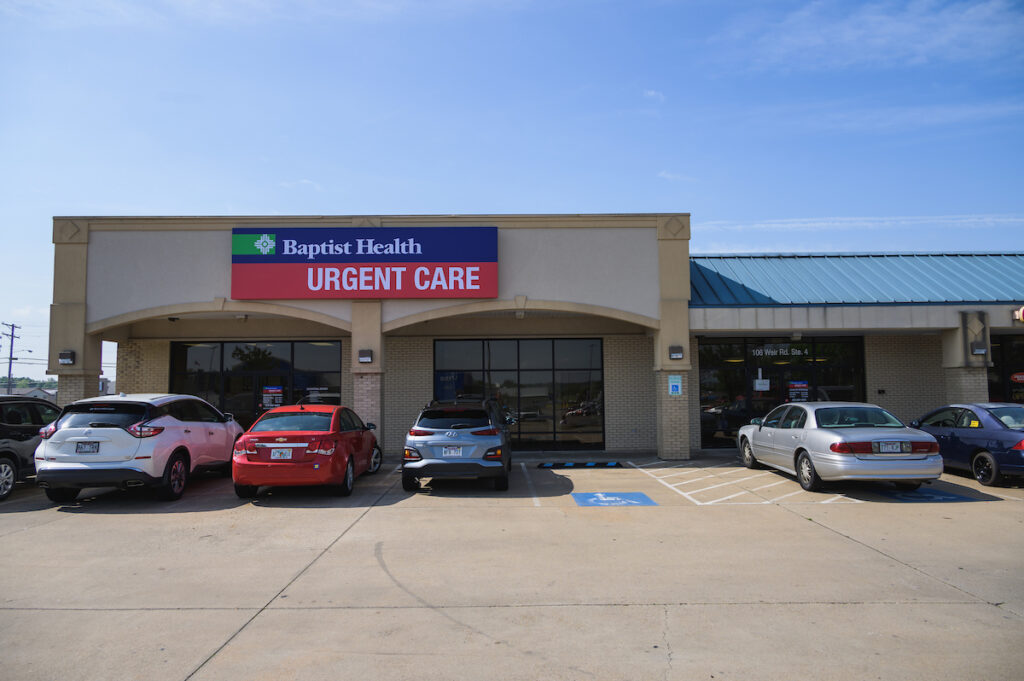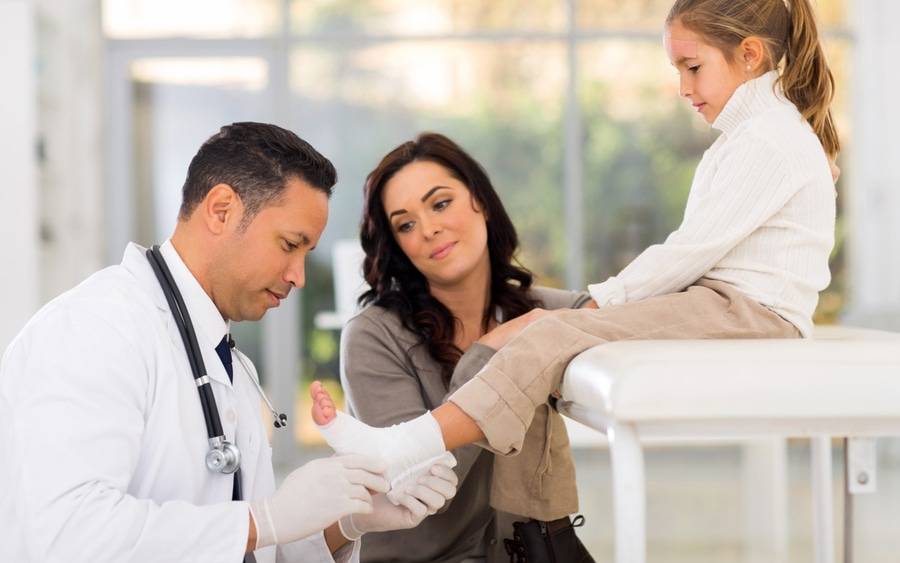The Relevance of Urgent Care Centers in Linking the Gap In Between Key Care and Emergency Providers
Urgent treatment facilities have actually arised as an essential component of the medical care landscape, efficiently dealing with the important need for prompt clinical focus without considering emergency services. By providing treatment for non-life-threatening problems, these facilities help to relieve the problem on emergency clinic and boost client accessibility to timely treatment. Their prolonged hours and varied services cater to a growing population seeking alternatives to conventional medical care. The evolving role of urgent treatment centers raises essential questions about their combination within the more comprehensive health care system and the effects for individual outcomes and source allocation.
Summary of Urgent Care Centers
Urgent care facilities have come to be an essential part of the healthcare delivery system, offering available clinical solutions for non-life-threatening problems. These centers normally run outside standard office hours, offering patients a choice to emergency rooms and medical care setups. Individuals seeking immediate care typically existing with issues such as small injuries, infections, or ailments that require punctual attention however do not posture an immediate danger to life or limb.
Immediate care centers are staffed by a series of medical care professionals, consisting of medical professionals, nurse professionals, and medical professional aides, who are outfitted to detect and deal with various clinical issues. They frequently include analysis tools such as X-ray makers and research laboratory solutions, allowing them to provide extensive care on-site.
The facility of urgent treatment centers has actually been affected by the enhancing need for prompt clinical solutions in a hectic society, where individuals may battle to safeguard appointments with main care providers. Consequently, these facilities aim to minimize congestion in emergency situation divisions, enhancing overall medical care effectiveness. Additionally, urgent care facilities often act as a bridge in between key care and emergency situation solutions, making sure that patients obtain appropriate care tailored to their specific clinical demands.

Advantages of Urgent Treatment Solutions
Accessing prompt clinical care is a considerable benefit of immediate treatment solutions. These facilities offer immediate attention for non-life-threatening problems, properly reducing wait times contrasted to standard emergency situation departments. Individuals seeking take care of small injuries, illnesses, or urgent health concerns can acquire treatment without the long hold-ups commonly related to medical facility sees.
An additional trick benefit is the extended hours of procedure. Lots of immediate treatment centers are open nights and weekend breaks, suiting clients that may not be able to see their medical care supplier throughout common office hours. This versatility makes urgent care an easily accessible option for those with active schedules or abrupt wellness issues.
In addition, urgent care centers commonly use a vast array of solutions, including analysis screening, X-rays, and basic lab solutions. This comprehensive strategy permits for fast diagnosis and therapy, improving patient fulfillment.
In addition, immediate treatment facilities are usually more economical than emergency clinic, making them an eye-catching alternative for individuals without insurance coverage or those with high-deductible plans. Overall, urgent treatment solutions play an essential duty in supplying accessible, timely, and affordable healthcare.
Comparison With Health Care
Typically, people often evaluate their alternatives in between immediate treatment centers and medical care providers when seeking medical attention. Both offer vital duties in the health care system, yet they differ dramatically in accessibility, expense, and scope.
Health care providers are commonly the very first point of contact for individuals, concentrating on long-term health and wellness management, preventative care, and persistent disease monitoring. They offer continuity of treatment, promoting a patient-provider connection that permits detailed health and wellness evaluations and customized treatment plans. Scheduling a consultation can be lengthy, frequently needing days or weeks in breakthrough. Urgent Care.
In comparison, urgent care centers offer immediate look after non-life-threatening problems that call for timely focus, such as small injuries or infections. These centers often operate beyond conventional workplace hours, suiting people that might not have the ability to visit their health care company during normal business times. Furthermore, urgent care is generally more cost-effective than emergency clinic visits, making it an appealing alternative for those with limited health care access.
Ultimately, while urgent treatment centers and health care suppliers both add to patient wellness, they cater to unique requirements, making it crucial for individuals to identify which alternative ideal aligns with their conditions.
Emergency Services Communication
The interaction in between urgent treatment centers and emergency situation solutions click over here is an essential aspect of the medical care landscape, especially when clients face circumstances that may intensify in severity. Immediate treatment centers act as a bridge in between medical care and emergency situation departments, resolving non-life-threatening conditions that call for immediate attention. This cooperation improves patient outcomes and enhances source allowance within the medical care system.
When people provide with immediate but not serious problems, immediate treatment facilities can efficiently manage their demands, alleviating congestion in emergency clinic. When an individual's problem surpasses the range of immediate care treatment, Facilities furnished with analysis abilities can assist in prompt referrals to emergency solutions. This smooth interaction assists ensure that clients obtain the appropriate degree of care without unneeded hold-ups.
In addition, reliable communication in between immediate treatment service providers and emergency services is vital. Sharing individual information and therapy histories promotes coordinated care, decreasing the risk of repetitive tests and treatments. As medical care proceeds to develop, the vibrant relationship between immediate care centers and emergency solutions will play a crucial function in enhancing client care effectiveness, complete satisfaction, and overall wellness end results within the area.
Future of Urgent Care Facilities
As medical care demands evolve, the future of immediate care centers is poised to end up being progressively integral to the total medical environment (Urgent Care). These facilities are most likely to increase their roles by incorporating innovative technologies, such as telemedicine, expert system, and digital health and wellness document integration. This will boost individual accessibility and improve treatment control in between immediate treatment, health care, and emergency solutions
Furthermore, urgent treatment facilities are expected to expand their solution offerings to consist of preventive treatment and persistent disease administration. This change will certainly position them as important elements in handling populace health, minimizing the concern on emergency departments, and addressing gaps in health care availability.
The expanding pattern of value-based care will better speed up the change of urgent treatment facilities, triggering them to focus on patient outcomes and contentment. Facilities might also embrace collaborative technique versions, functioning very closely with experts and health care service providers to make sure detailed client monitoring.
Final Thought
Finally, urgent care facilities serve a vital function in the medical care system by giving prompt accessibility to treatment for non-life-threatening conditions, efficiently reducing pressure on emergency situation services. Their prolonged hours and varied series of solutions see here now improve client benefit and contentment, while additionally making sure proper treatment distribution. As health care needs remain to evolve, the duty i thought about this of immediate treatment centers will likely end up being significantly considerable, further connecting the void in between health care and emergency situation services.
The facility of immediate treatment facilities has been affected by the raising need for timely medical services in a busy culture, where patients may have a hard time to secure visits with primary treatment companies. Additionally, immediate care centers typically offer as a bridge in between key treatment and emergency solutions, making certain that individuals get proper treatment customized to their specific medical needs.
Several urgent care facilities are open evenings and weekend breaks, suiting people who might not be able to see their primary care provider during basic office hours (Urgent Care). As medical care proceeds to develop, the dynamic partnership in between urgent care centers and emergency services will certainly play a critical duty in boosting client care efficiency, satisfaction, and general health end results within the neighborhood
